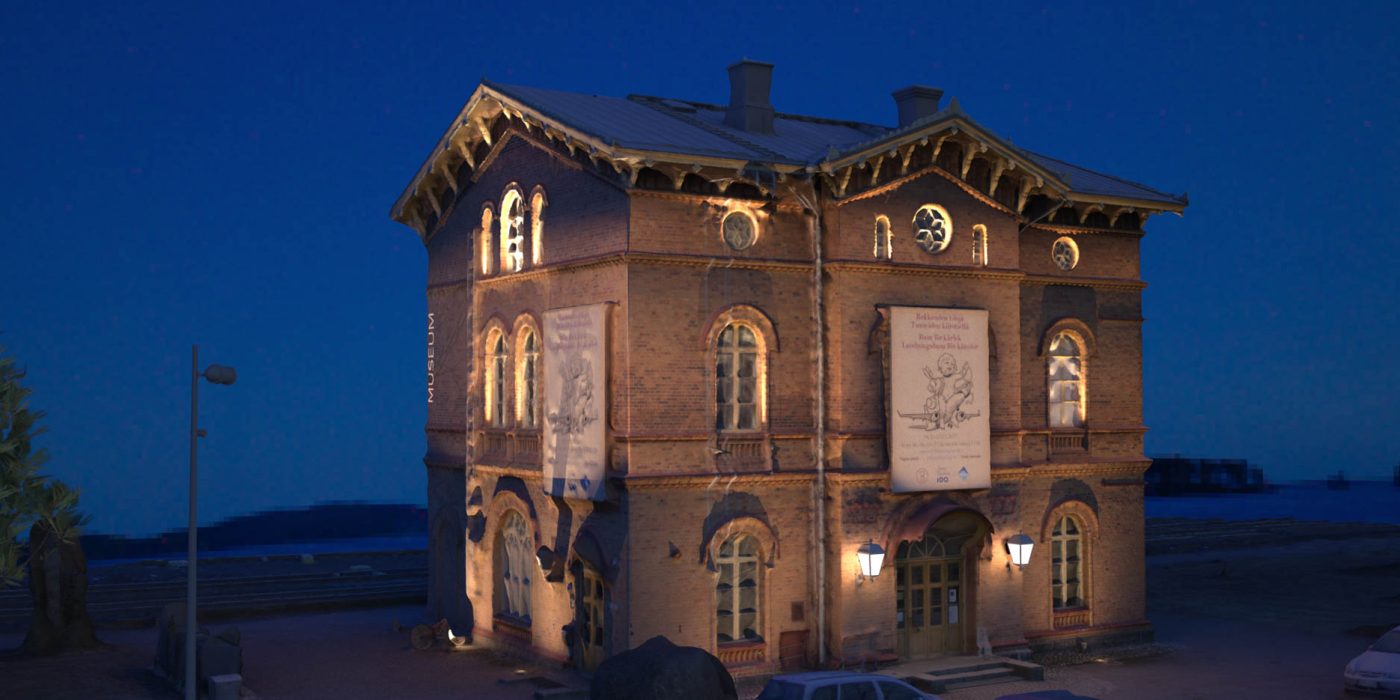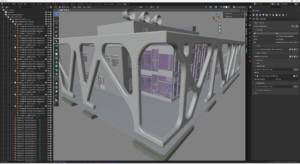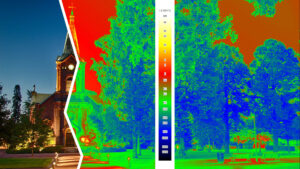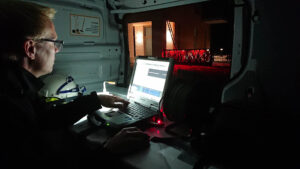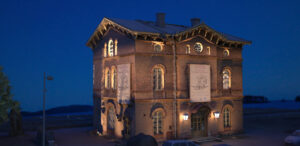Since 2014, our firm has been at the forefront of blending drone technology with 3D modelling in the field of lighting design. This innovative approach has transformed our projects, injecting increased precision, efficiency, and safety into our work. We’ve particularly benefited from the significant reduction in project timelines. Here, we present three compelling examples from our portfolio that showcase the power and practical application of drone-based 3D modelling in our work over the past years.
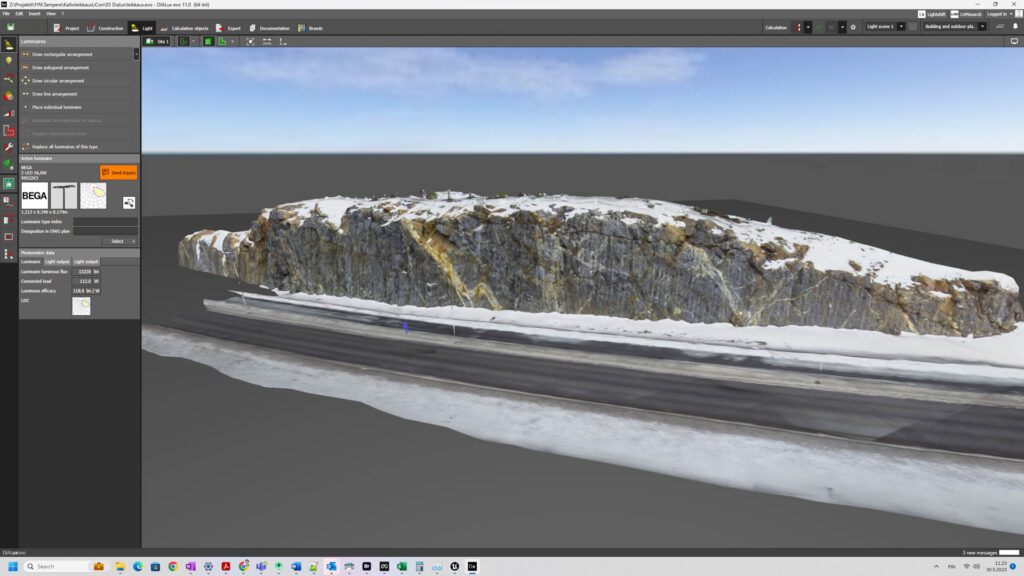
Example 1: Illuminating a Motorway Cliff Cut
In an outdoor lighting project, we faced the task of illuminating a motorway cliff cut. With only a client-provided 2D plan to work with, the complexity of the terrain quickly became clear. Attempting to create a 3D model of this cliff cut using lighting calculation software like DIALux would be virtually impossible due to the complex structure of the rocks.
To overcome this, we deployed a drone equipped with a high-resolution camera. It swiftly and safely navigated the complex landscape, capturing detailed data efficiently. Using this data, we created a precise 3D model. This new approach allowed our designers to craft effective lighting solutions faster and more accurately, transforming the way we tackle complex projects.
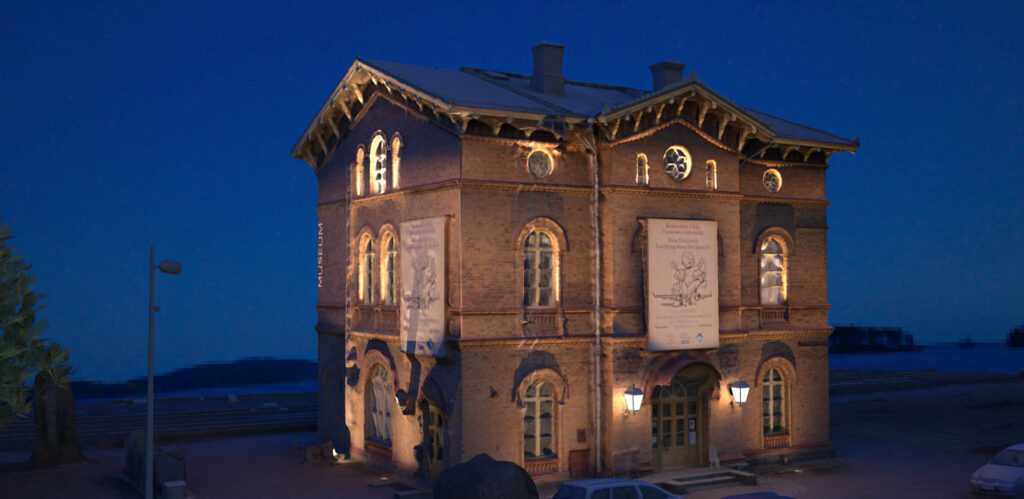
Example 2: Architectural Lighting Design for Buildings
In numerous projects, we’ve harnessed the power of drone technology for designing lighting for buildings. The drone has consistently provided an invaluable solution, effortlessly navigating hard-to-reach areas within these structures, and capturing high-quality images swiftly and efficiently.
We’ve used the collected data to create detailed, cloud-based 3D models of the buildings, offering our team a comprehensive view in significantly reduced timeframes. These models have formed the basis for accurately applying lights and generating visualisations, drastically accelerating our progress from conceptualization to realization.
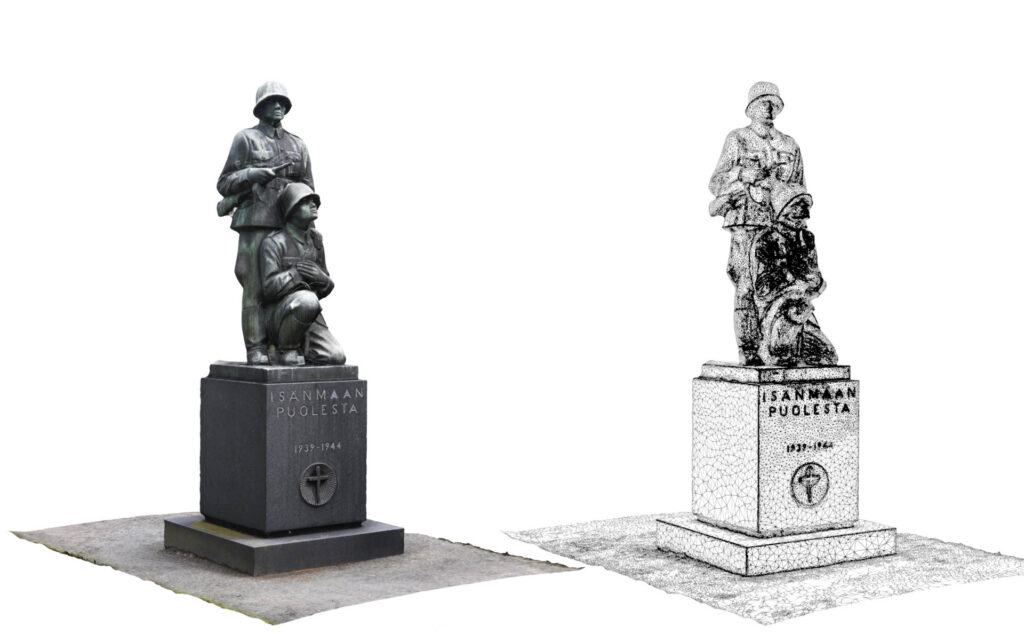
Example 3: Bringing Light to Statues
In various projects, our challenge has been to illuminate detailed statues. This task traditionally presents difficulties in obtaining precise drawings or 3D models. To address this, we deployed a drone to navigate around the statues, capturing high-resolution images from numerous angles.
We used the collected data to create a highly accurate 3D model, complete with textures. Importing this model into our lighting calculation software allowed us to devise exact lighting solutions for these complex structures.
In each of these projects, the time-saving advantage of drone-based 3D modelling has proved invaluable. This innovative approach has consistently reduced our project timelines and costs, while improving safety and the quality of the final designs. By proactively embracing drone technology and 3D modelling, we continue to guide our lighting design practice into a future filled with bright possibilities.

